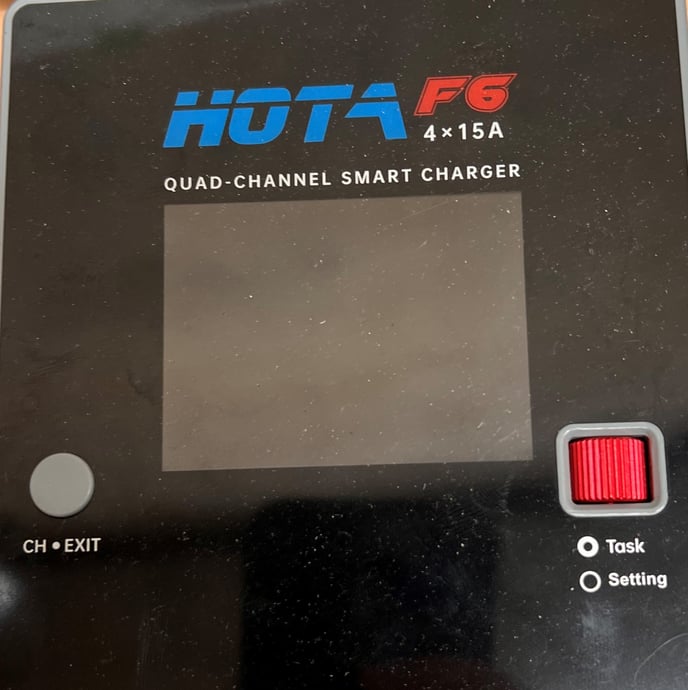Learn a little bit about LiPo batteries, ways to look out for them, and how to discharge them for storage.
How to Maintain the LiPo Battery?
Charging
The full knowledge base article for battery charging is available here.
💡 Do not charge batteries unless they will be discharged within 5 days to prevent damage to the battery.
- Only use the SmartDrone supplied Battery Charger.
- Users should always charge Batteries in an open area away from flammable materials, liquids and surfaces.
- Always charge the battery in an environment with a moderate temperature (55-85°F)
- Never charge Batteries inside the SmartDrone Discovery 2.
- Never charge batteries below freezing (0°C, 32°F) or Hot to the touch (above 100° F).
- Users should Always set the charger to the proper cell count and/or voltage listed on Batteries’ labels.
- Users should always set the charge rate to 7.0A
- Never overcharge batteries over their rated maximal voltage (4.2V/cell for LiPo).
💡 The charger should never be set to charge/Discharge Batteries at a rate greater than 1C (One (1) times the capacity of Batteries in amp hours) unless another C rate is specified in the manufacturer’s product documentation or the rate is preset as part of a specific battery and charger combination. DO NOT alter the charge rate once charging has begun.
Lipo Battery Storage
💡 A battery should be discharged to a storage voltage if it will not be in use within 5 days
- Do not directly connect the terminals with metal objects. This will short-circuit Batteries, resulting in heat and electrical discharge.
- Never store Batteries in extreme temperatures or direct sunlight. The battery should be stored in the AC at a moderate temperature between 60-85°F.
- The storage voltage should be 3.8v per cell. This can be achieved using the charger or by verifying the discharged voltage of a battery after use in Discovery 2.
- Always disconnect batteries from the drone when not in use and store Batteries in a non-conductive container.
- Never alter, puncture, or impact Batteries and related components.
Discharging to a Storage Charge with the SmartDrone Charger
💡 The button (button 1) on the left allows you to switch the page and go back when you are in the menu. The Scroller/button on the right (Toggle) allows you to move through the menu and select or click on items

-
Navigate to the desired battery channel
-3.png?width=456&height=349&name=Untitled%20(4)-3.png)
-
Click the toggle switch to open the menu
-2.png?width=409&height=324&name=Untitled%20(5)-2.png)
-
Set the task settings to:
-
Select Task: Storage
-
Battery Type: LiPo
-
Cell Voltage: 3.80V
-
Cell Count: 6S(22.2V)
-
Current Setting: 7.0A
-2.png?width=434&height=324&name=Untitled%20(6)-2.png)
-
-
Select Start Task
-3.png?width=374&height=278&name=Untitled%20(2)-3.png)
Lipo Battery Information
We can see there are some parameters on this LiPo battery, they are Battery Capacity, Battery Voltage, Cell Configuration, and Discharge Rate.

- Discharge Rating
- Cell Configuration
- Battery Voltage
- Battery Capacity
Battery Voltage
A LiPo cell has a nominal voltage of 3.7V, and a lipo cell = 1 cell = 1S = 3.7V. For the 14.8V battery pictured above, that means that there are four cells in series (which means the voltage gets added together). This is sometimes why you will hear people talk about a “4S” battery pack – it means that there are 4 cells in Series. So a four-cell (4S) pack is 14.8V, a three-cell (3S) pack is 11.1V, and so on.
Discovery 2 Battery: 22.2 V battery = 6 cells x 3.7V= 6S battery
Battery Capacity
The 2200mAh on the example lipo battery picture above means the capacity of the lipo battery. Capacity is used to measure how much power a battery can hold. The unit of capacity is milliamp hours (mAh), which means 2200mAh can be put on the battery to discharge it in one hour. Milliamp also can be converted to amps(A), here is the conversion:
2200mAh=2.2 Amp Hour(1Ah)
